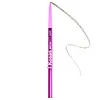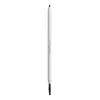What's inside
What's inside
 Key Ingredients
Key Ingredients

 Benefits
Benefits

 Concerns
Concerns

 Ingredients Side-by-side
Ingredients Side-by-side

Hydrogenated Coco-Glycerides
EmollientEuphorbia Cerifera Wax
Zinc Stearate
Cosmetic ColorantCopernicia Cerifera Wax
Synthetic Japan Wax
EmollientMica
Cosmetic ColorantPalmitic Acid
EmollientStearic Acid
CleansingTriethoxycaprylylsilane
Polyhydroxystearic Acid
EmulsifyingTocopherol
AntioxidantLecithin
EmollientEthylhexyl Palmitate
EmollientIsostearic Acid
CleansingIsopropyl Myristate
EmollientPolyglyceryl-3 Polyricinoleate
EmulsifyingWater
Skin ConditioningGlyceryl Caprylate
EmollientCaprylyl Glycol
EmollientIron Oxides
CI 77891
Cosmetic ColorantHydrogenated Coco-Glycerides, Euphorbia Cerifera Wax, Zinc Stearate, Copernicia Cerifera Wax, Synthetic Japan Wax, Mica, Palmitic Acid, Stearic Acid, Triethoxycaprylylsilane, Polyhydroxystearic Acid, Tocopherol, Lecithin, Ethylhexyl Palmitate, Isostearic Acid, Isopropyl Myristate, Polyglyceryl-3 Polyricinoleate, Water, Glyceryl Caprylate, Caprylyl Glycol, Iron Oxides, CI 77891
Aluminum Starch Octenylsuccinate
AbsorbentCetearyl Ethylhexanoate
EmollientPolyethylene
AbrasiveOctyldodecanol
EmollientMica
Cosmetic ColorantDicalcium Phosphate
AbrasiveWater
Skin ConditioningPolyhydroxystearic Acid
EmulsifyingLecithin
EmollientDisteardimonium Hectorite
StabilisingTocopherol
AntioxidantAscorbyl Palmitate
AntioxidantPropylene Carbonate
SolventCitric Acid
BufferingCI 77891
Cosmetic ColorantIron Oxides
Ingredients Explained
These ingredients are found in both products.
Ingredients higher up in an ingredient list are typically present in a larger amount.
Ci 77891 is a white pigment from Titanium dioxide. It is naturally found in minerals such as rutile and ilmenite.
It's main function is to add a white color to cosmetics. It can also be mixed with other colors to create different shades.
Ci 77891 is commonly found in sunscreens due to its ability to block UV rays.
Learn more about CI 77891Lecithin is a term for a group of substances found in the cell membranes of plants, animals, and humans. They are made up of mixture of phospholipids.
This ingredient has emollient and emulsifying properties.
As an emollient, lecithen helps soften the skin and creates a barrier to keep moisture in.
As an emulsifier, it also helps prevent water and oil ingredients from separating. Lecithin can also help ingredients be better absorbed by the skin.
This is because the phospholipids in lecithin produce liposomes. Liposomes help other ingredients get through the skin barrier.
Depending on the source of this ingredient, lecithin may not be fungal acne safe. This is because some sources of lecithin come from soybean oil, which may feed the malassezia yeast that feeds fungal acne.
We recommend reaching out to the brand you are purchasing from to inquire about the source of their lecithin.
Some other names for this ingredient include soy lecithin and deoiled soy lecithin.
Learn more about LecithinMica is a naturally occurring mineral used to add shimmer and color in cosmetics. It can also help improve the texture of a product or give it an opaque, white/silver color.
Serecite is the name for very fine but ragged grains of mica.
This ingredient is often coated with metal oxides like titanium dioxide. Trace amounts of heavy metals may be found in mica, but these metals are not harmful in our personal products.
Mica has been used since prehistoric times throughout the world. Ancient Egyptian, Indian, Greek, Roman, Aztec, and Chinese civilizations have used mica.
Learn more about MicaPolyhydroxystearic Acid is a soft wax made from castor oil.
It is is a texture thickener, emulsifier, and film-former. Emulsifiers prevent ingredients from separating, such as oils and waters.
Polyhydroxystearic Acid may not be fungal acne safe.
Learn more about Polyhydroxystearic AcidTocopherol (also known as Vitamin E) is a common antioxidant used to help protect the skin from free-radicals and strengthen the skin barrier. It's also fat soluble - this means our skin is great at absorbing it.
Vitamin E also helps keep your natural skin lipids healthy. Your lipid skin barrier naturally consists of lipids, ceramides, and fatty acids. Vitamin E offers extra protection for your skin’s lipid barrier, keeping your skin healthy and nourished.
Another benefit is a bit of UV protection. Vitamin E helps reduce the damage caused by UVB rays. (It should not replace your sunscreen). Combining it with Vitamin C can decrease sunburned cells and hyperpigmentation after UV exposure.
You might have noticed Vitamin E + C often paired together. This is because it is great at stabilizing Vitamin C. Using the two together helps increase the effectiveness of both ingredients.
There are often claims that Vitamin E can reduce/prevent scarring, but these claims haven't been confirmed by scientific research.
Learn more about TocopherolWater. It's the most common cosmetic ingredient of all. You'll usually see it at the top of ingredient lists, meaning that it makes up the largest part of the product.
So why is it so popular? Water most often acts as a solvent - this means that it helps dissolve other ingredients into the formulation.
You'll also recognize water as that liquid we all need to stay alive. If you see this, drink a glass of water. Stay hydrated!
Learn more about WaterThis ingredient is a combination of red, black, and yellow iron oxide pigments. This combination of colors is usually found in foundation, because it results in a "skin" color.